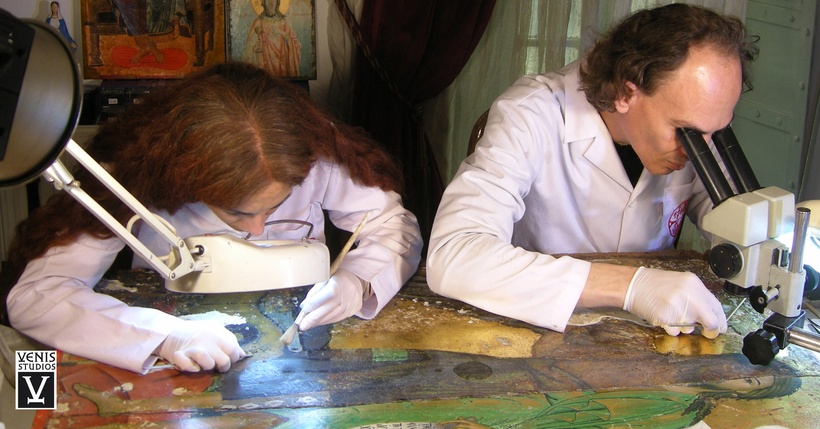
A Critical Examination of Overpainting in Icons and Paintings
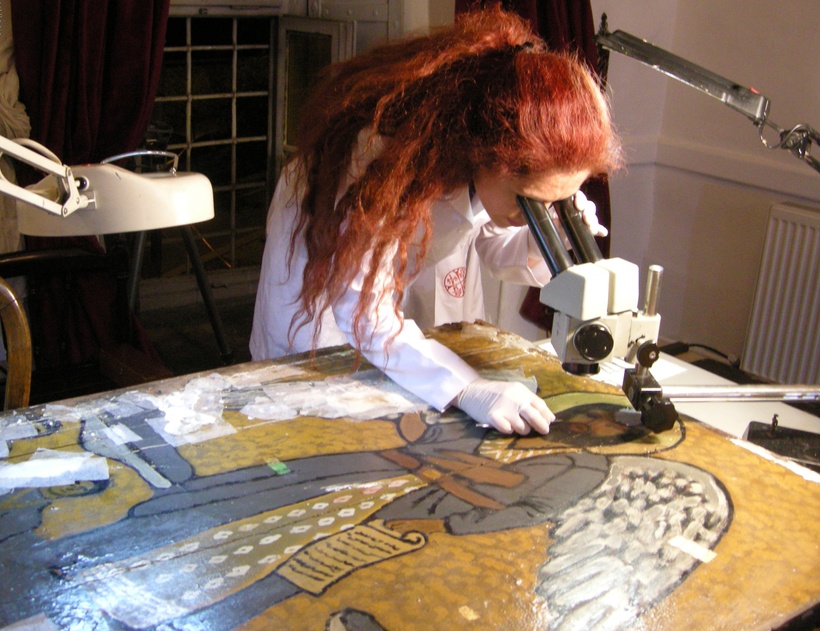
©VENIS STUDIOS
Overpainting or repainting, observed in historically painted artworks, particularly in portable icons and less commonly in painting panels, represents arbitrary interventions pursued solely for aesthetic motives. Notably, icons, owing to their prevalent use in religious contexts, are prone to various forms of deterioration and necessitate upkeep to preserve their ceremonial significance. Consequently, such interventions are often initiated for “beautification,” typically by unskilled and unsuitable individuals lacking professional expertise or credentials.
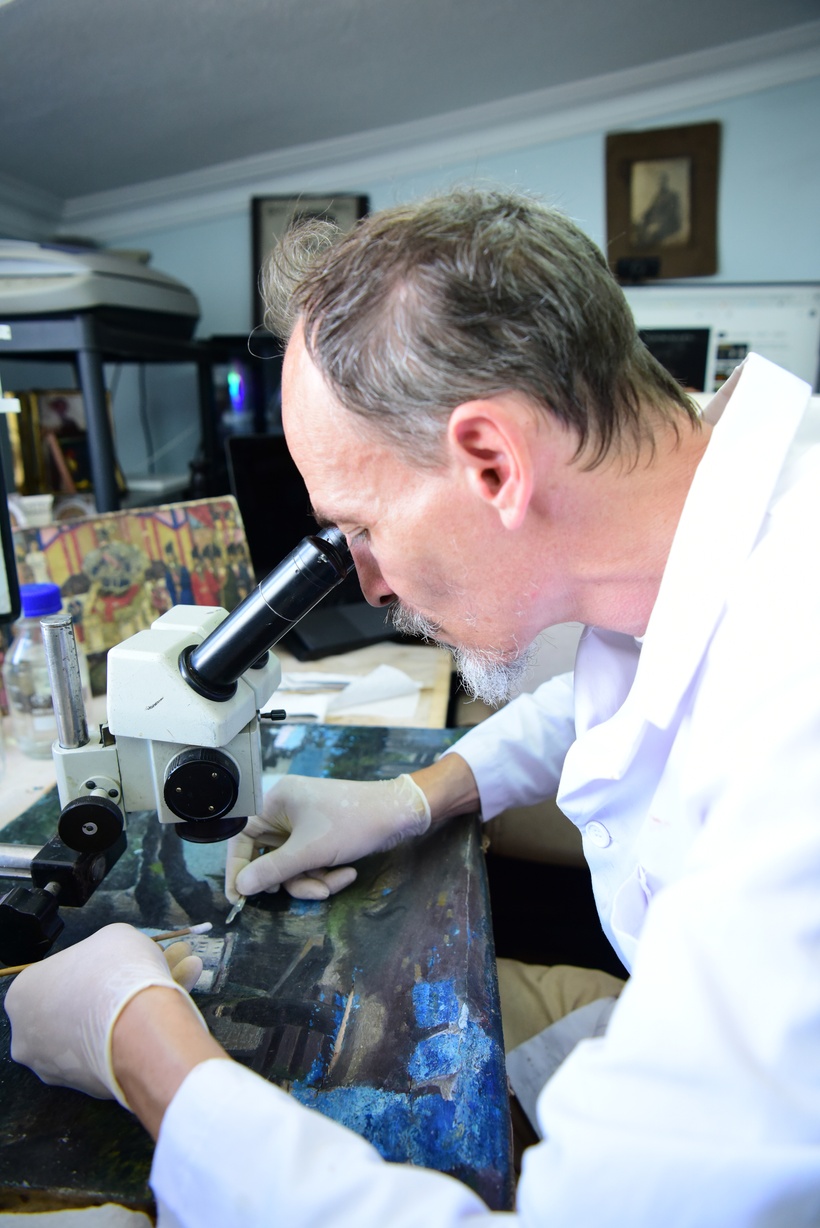
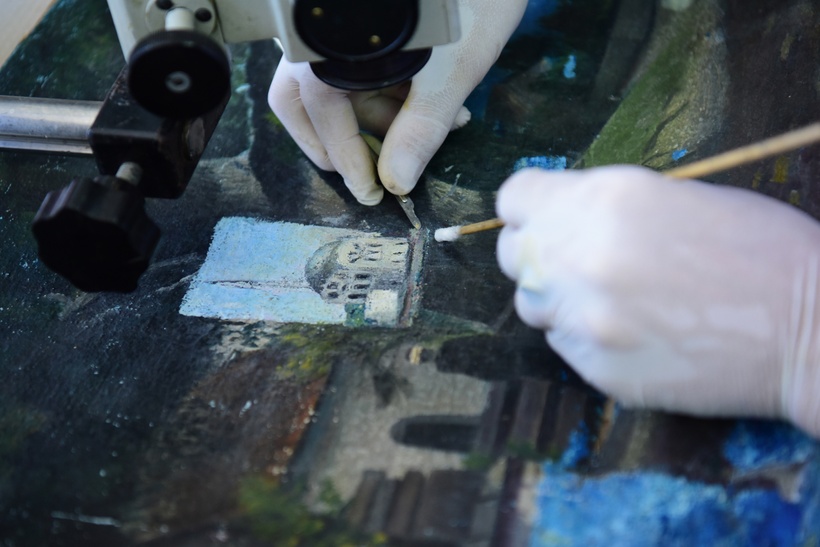
©VENIS STUDIOS
In their attempt to initially “cleanse” the works or the icons, as they commonly term their arbitrary intervention, these individuals, often amateurs, cause damage to the designs and colours of the icons or the paintings they undertake. To cover up these damages, they overlay whatever authentic elements remain of the icon or the artwork with a new layer of paint, imparting their arbitrary and counterfeit touch upon the works. This action distorts their authenticity and integrity first and foremost, including the composition, design, colours, etc., and sometimes, especially in earlier times, even involves re-painting the icons or artworks with new painting subjects. In better scenarios, either the damages are minor or they overpaint over the tarnishing and often “black” varnish of the work without delving into the arbitrary and destructive “cleansing.” Their “correction,” as they commonly refer to these arbitrary interventions, involves partially or completely covering the artwork. Less frequently, particularly in older times, we encounter the addition of a new “gesso” layer preparation on top of the old icon, followed by re-painting it from scratch. However, in most cases, the new “arbitrary retoucher” overlays the design of the original image to “correct” it. Thus, by arbitrarily overlaying and counterfeiting the authenticity and historicity of the icon or the artwork, they cover the painting surface with new designs and colours while attempting to mimic the existing ones, albeit without ever matching the originals, resulting in the violation and alteration of the authenticity and historicity of the icon or the respective painting.
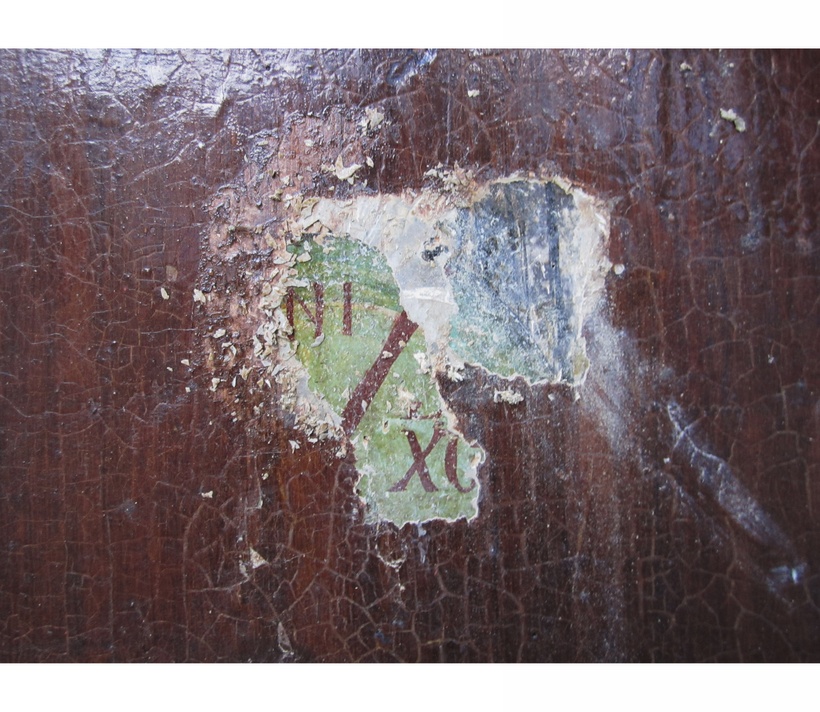
©VENIS STUDIOS
We identify three primary cases of overpainting: direct colour additions, intervention by applying a “gesso” preparation layer or repainting directly on the new colours onto the original surface without using a “gesso” preparation layer. Also, partial colourizations are frequently encountered, where the original colours and designs are overlaid.
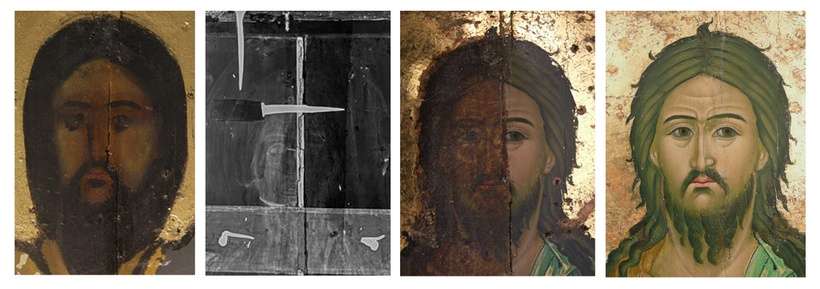
©VENIS STUDIOS
How are Overpaintings Identified?
Initially, the detection of overpainting relies on visual observation and tactile examination of the artwork to identify any irregularities in the painting surface, differences in texture, or indications through losses suggesting the presence of additional painting layers. Observations become clearer with the use of raking light. The extensive experience of a specialized Senior conservator – restorer can often promptly identify the presence of overpainting.
The next stage involves using optical and radiographic methods for a more accurate reading of the overpaintings. Non-destructive methods performed include:
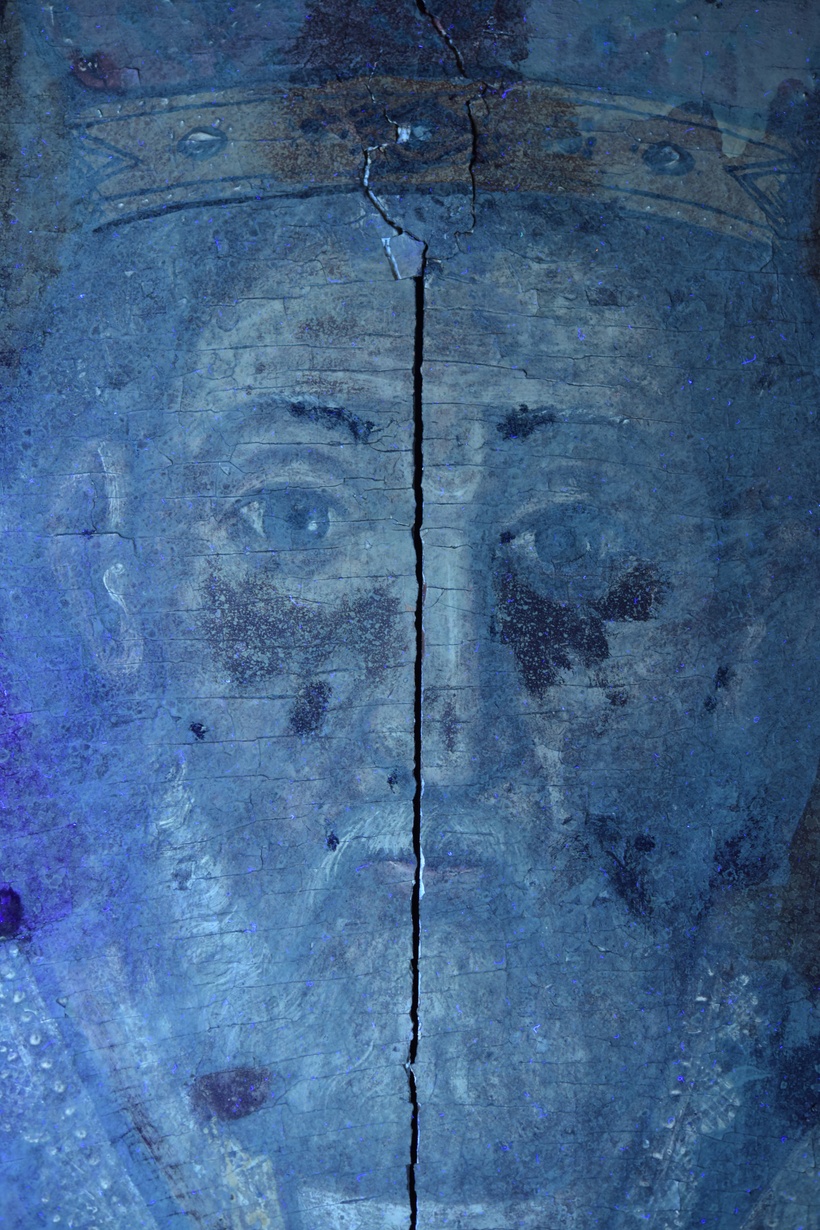
©VENIS STUDIOS
-
Ultraviolet Photography: This method allows for observing overpainting and surface colourations superficially, as varnishes tend to fluoresce while pure colour does not. It is noteworthy that this method is not useful when there is a superimposed layer of varnish.
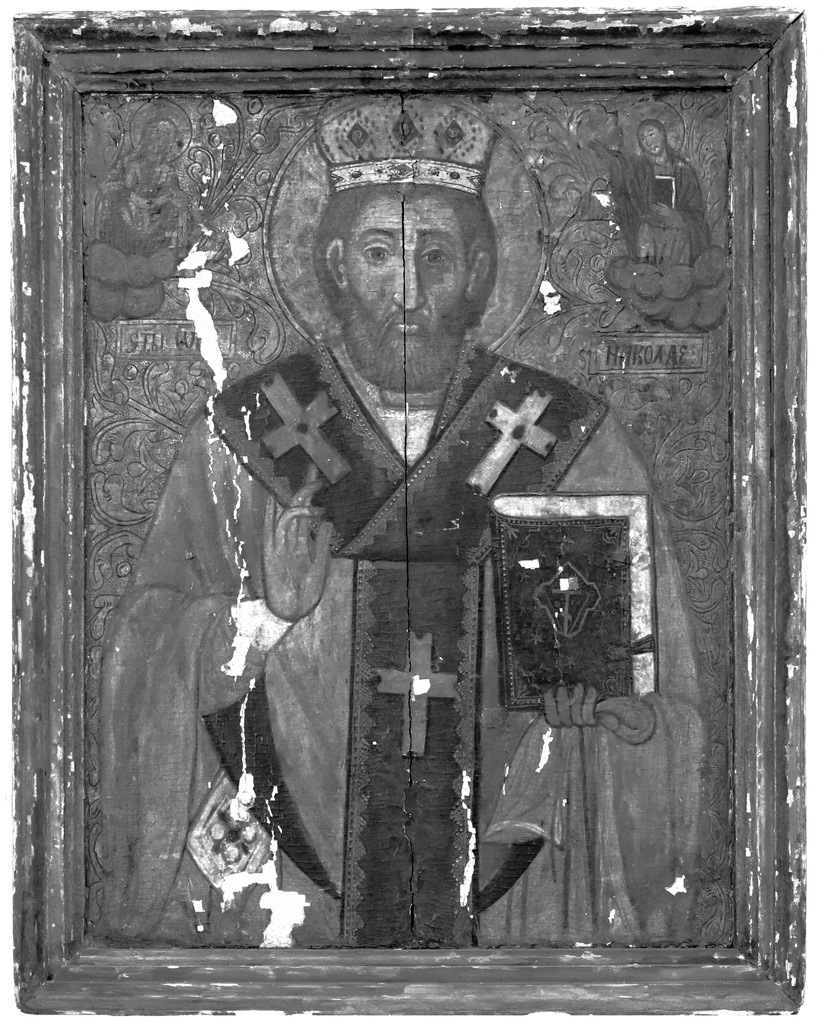
©VENIS STUDIOS
-
Infrared Photography: penetrates through the pigments, providing more information about the depth of the painting and revealing elements of the overpaintings in some cases.
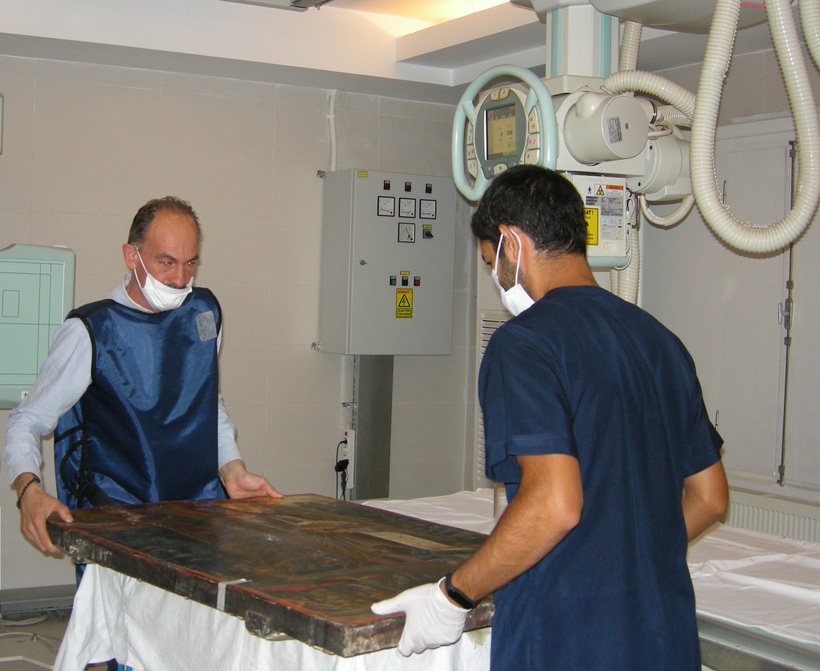
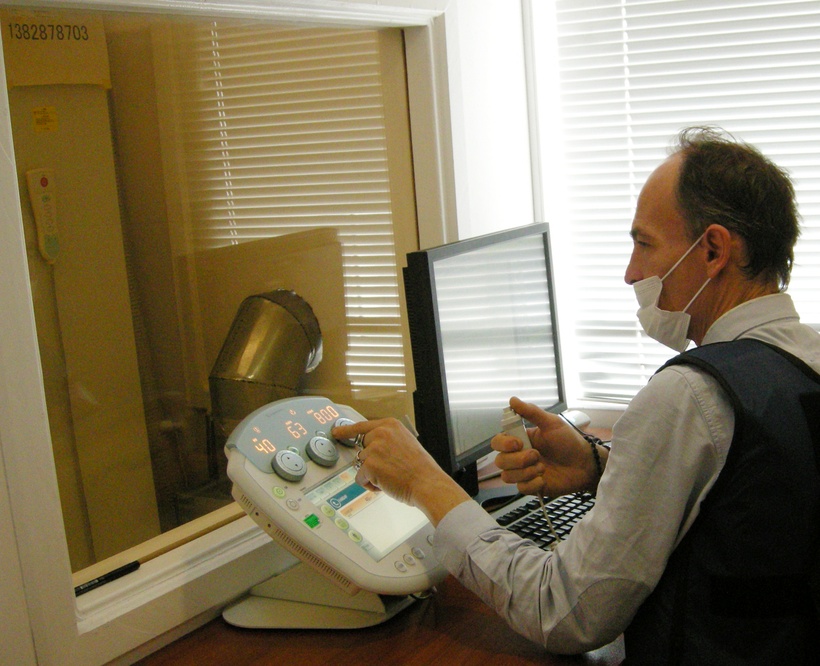
©VENIS STUDIOS
-
However, the most penetrating and effective primary method is X-ray, where X-rays project the image’s elements throughout its depth. This is because elements with high atomic weight (such as metals) show significant absorption, appearing or being recorded as white. Thus, depending on the pigments, we obtain a grayscale image. It is crucial to distinguish between the original image or artwork and the areas of overpainting. For this reason, an experienced Sr. Conservator-restorer can interpret the results of a radiograph.
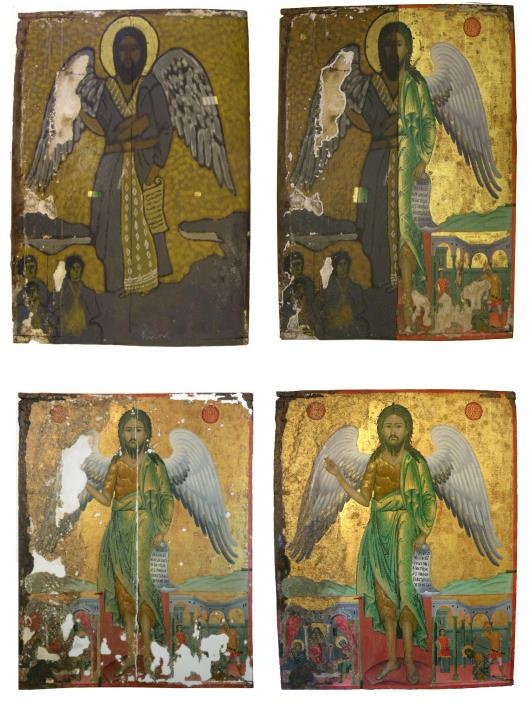
©VENIS STUDIOS
What Happens In The Case Of A Fully or Partially Overpainted Artwork Or Icon?
If the artwork or icon is entirely overpainted, the decision to remove and reveal it is not a simple matter. It presupposes the complete and exclusive responsibility of the responsible Senior conservator-restorer throughout the entire process of cleaning and after the completion of the work, determining how the artwork or icon will be revealed and preserved for future generations. I’m not referring, of course, to the final aesthetic presentation but rather to the extent of the damages that might occur due to the slightest carelessness, neglect, or lack of experience. These damages, besides altering the painting, may also cause future harm and deterioration to the work, which cannot be rectified upon delivery.
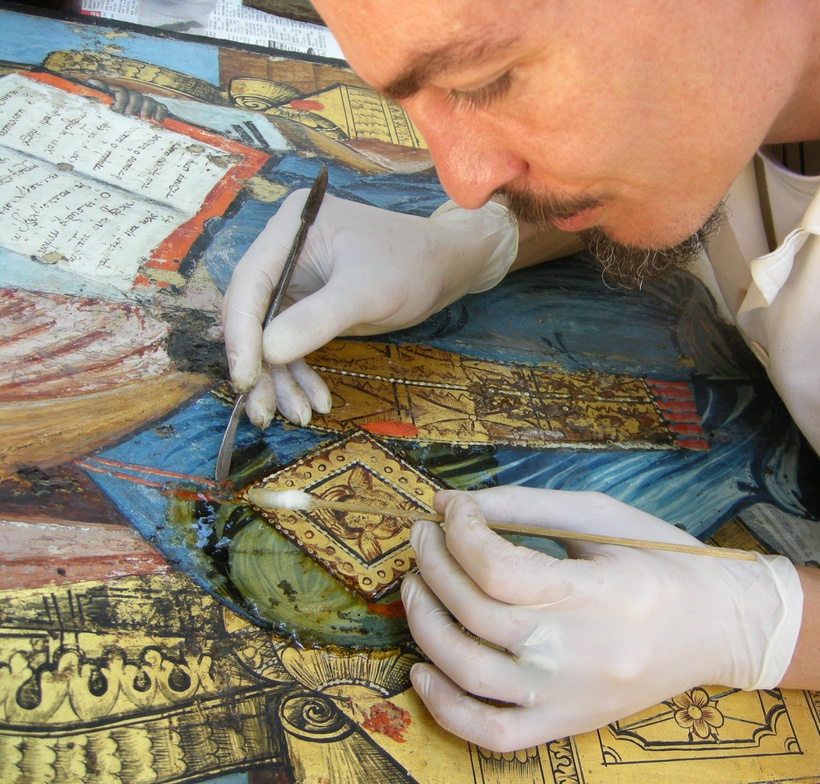
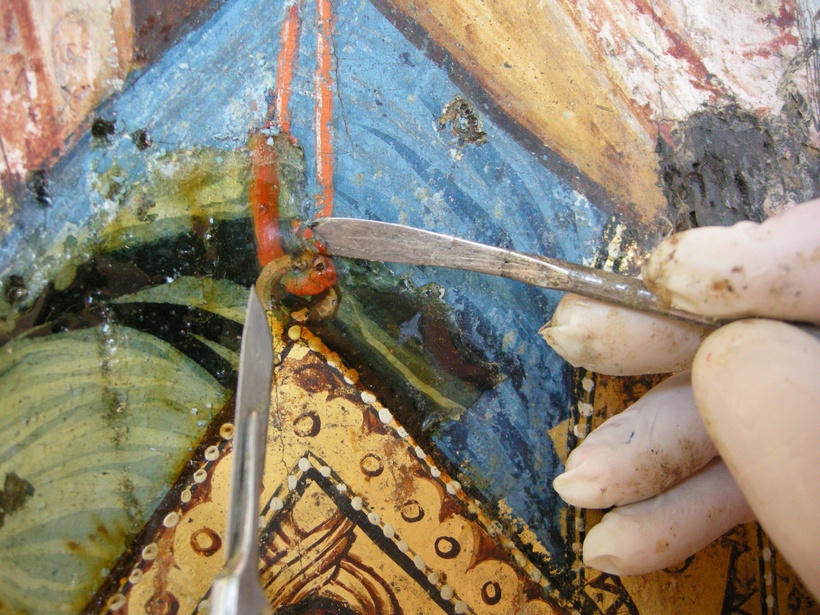
©VENIS STUDIOS
The removal of overpainting cannot be undertaken by, just, anyone, primarily not by individuals lacking experience, even among Conservators-Restorers. Extensive experience in managing such cases is indispensable, as it can either save or ruin the artwork or icon. Unfortunately, someone who is not an experienced Senior Art conservator-restorer cannot comprehend the potential damages caused by such interventions. A prerequisite is the scientific study of such interventions, including necessary colour analyses for colour sensitivity, as well as the imperative need for radiography of the artwork or icon, and other visual methods to ascertain both the degree of overpainting in the respective work and what is salvageable from the original painting.
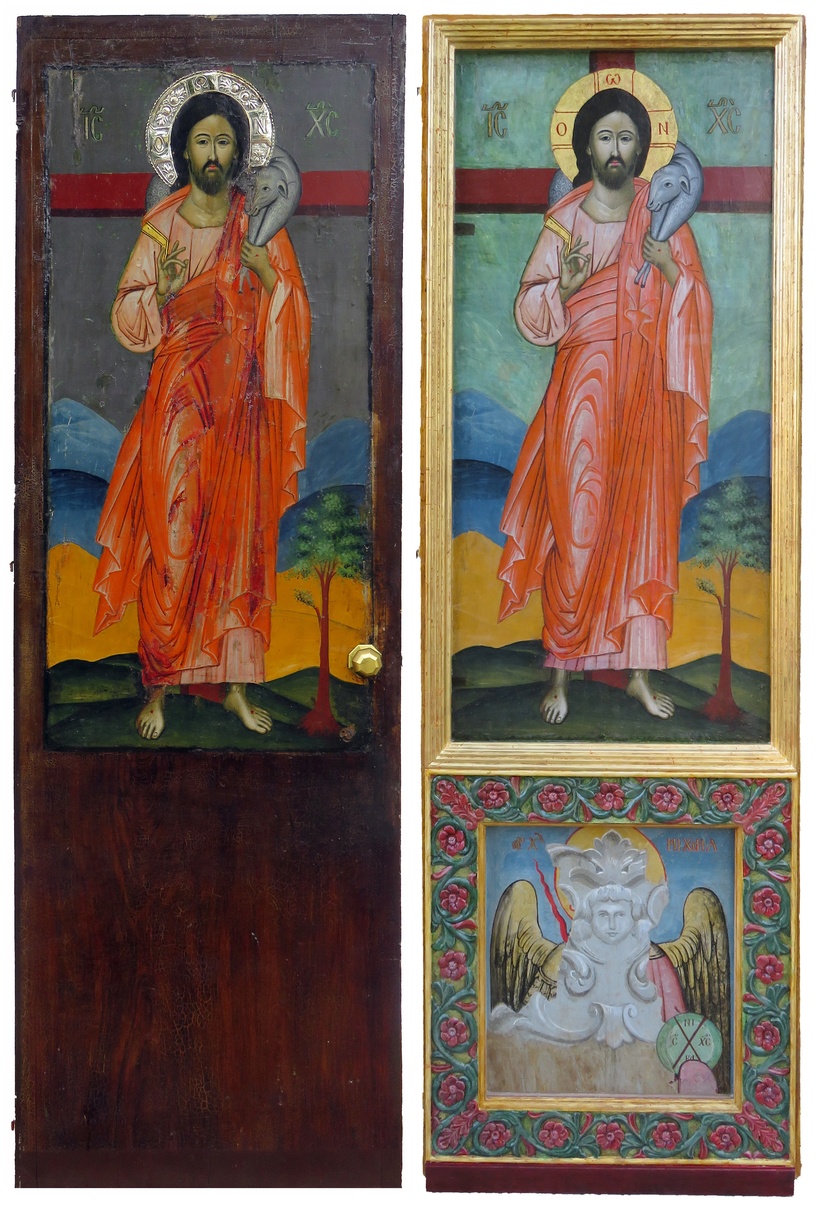
©VENIS STUDIOS
Approaching Artwork Conservation with Reverence and Responsibility
All of us must approach the conservation and restoration of artworks with utmost respect and complete awareness. When entrusting the conservation and restoration of these masterpieces to professionals, what matters most is the reverence and love for these historic artworks, as well as the expertise of the conservators and restorers who will undertake such an important task. It is essential to avoid tragic and irreversible errors in the treatment of our cultural heritage. These invaluable treasures have survived wars and various forms of human and natural disasters, reaching our hands in whatever condition they may be. If we are unable to responsibly and effectively address their needs, it is better and more responsible to place them in a safe environment, guided by the recommendations of specialized art conservators and restorers, until the right time and people are available to undertake their proper and permanent conservation and restoration treatments. Through correct and conscientious conservation and restoration, we can ensure that the passage of time upon our ancestral treasures is guaranteed a secure and enduring legacy.
I want to learn more:
by Venizelos G. Gavrilakis
Edited Athina Gkouma
About the author:
Venizelos G. Gavrilakis, a renowned expert in the art conservation and restoration of Byzantine and post-Byzantine icons, historical oil paintings, and Ottoman-era artwork, has been working as a senior expert conservator and restorer since 1994. He has worked with various institutions and has been involved in international conservation meetings and conferences. Gavrilakis is the president of the art conservation and restoration company VENIS STUDIOS, based in Istanbul, Turkey, and has collaborated with galleries, antique dealers, and private collectors.
-
Articles: World Art News articles
Our related articles

